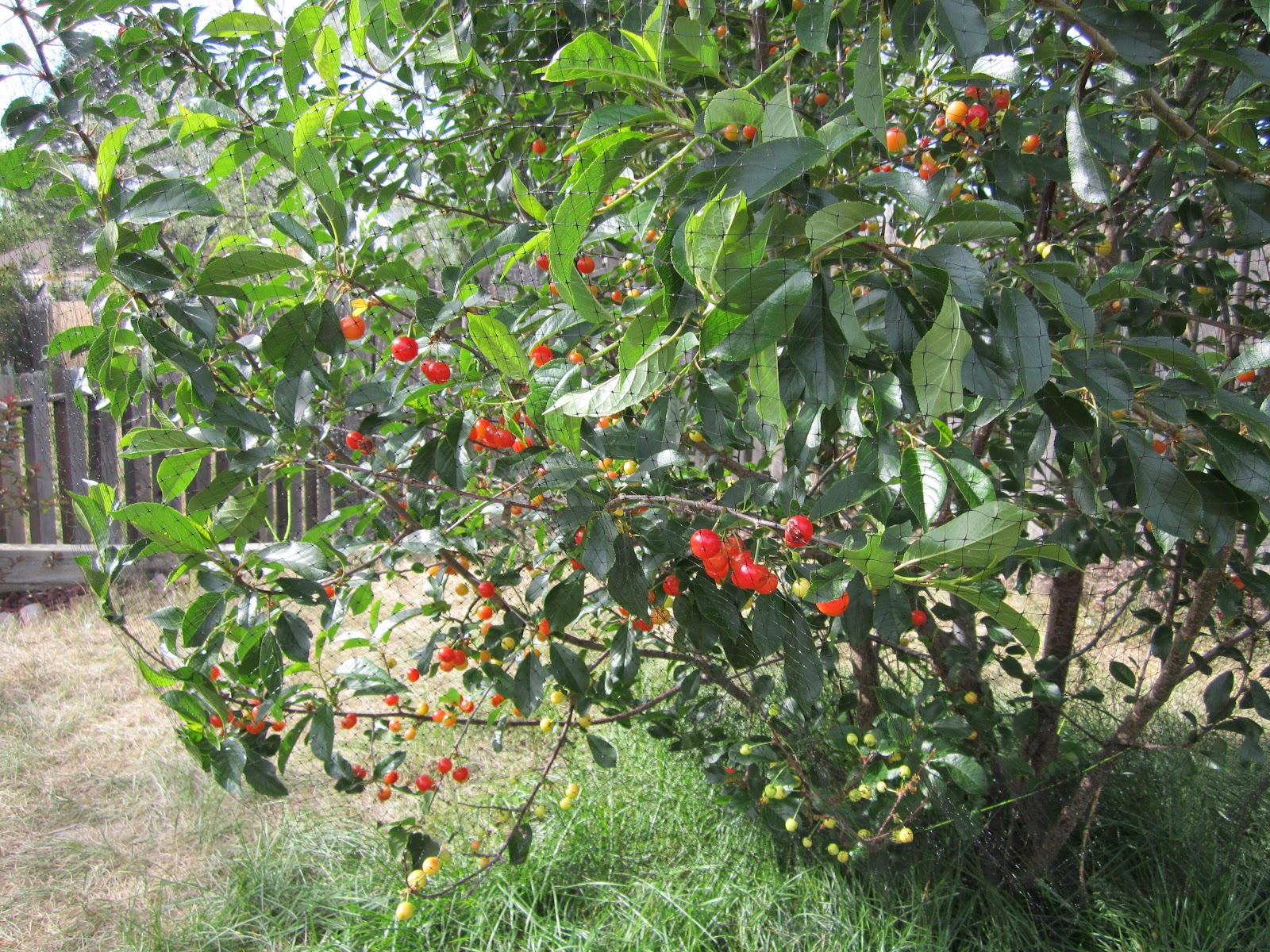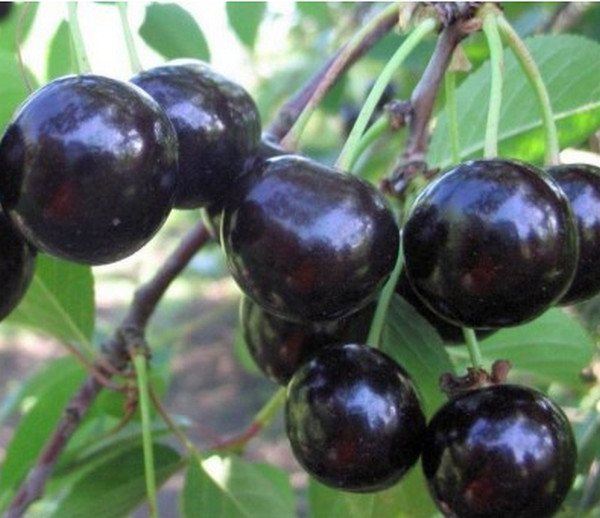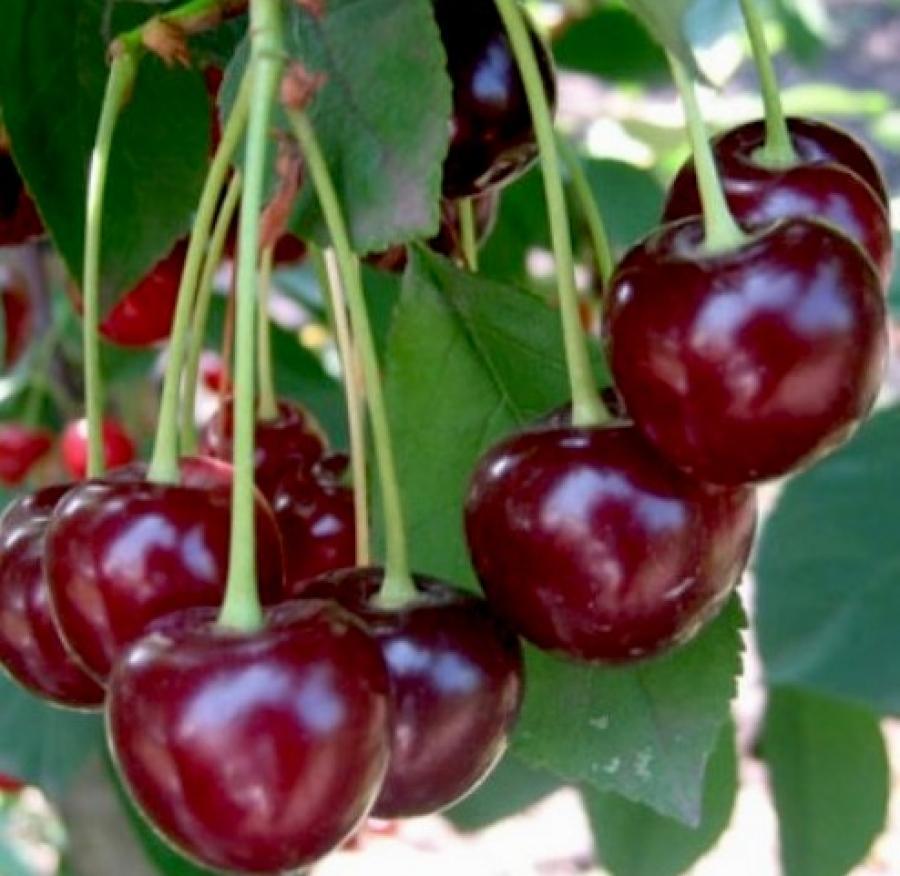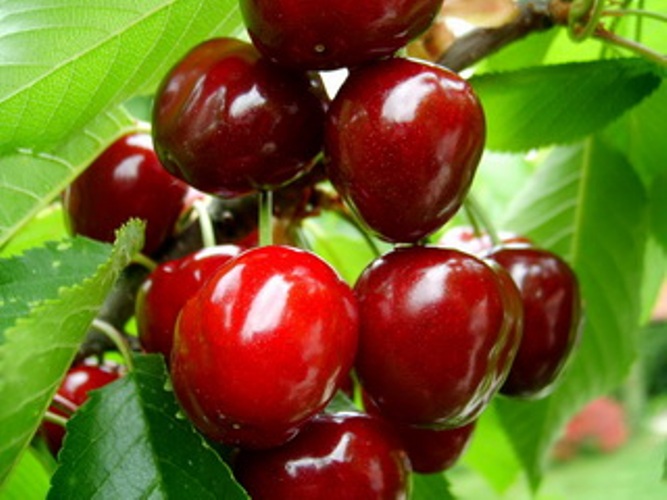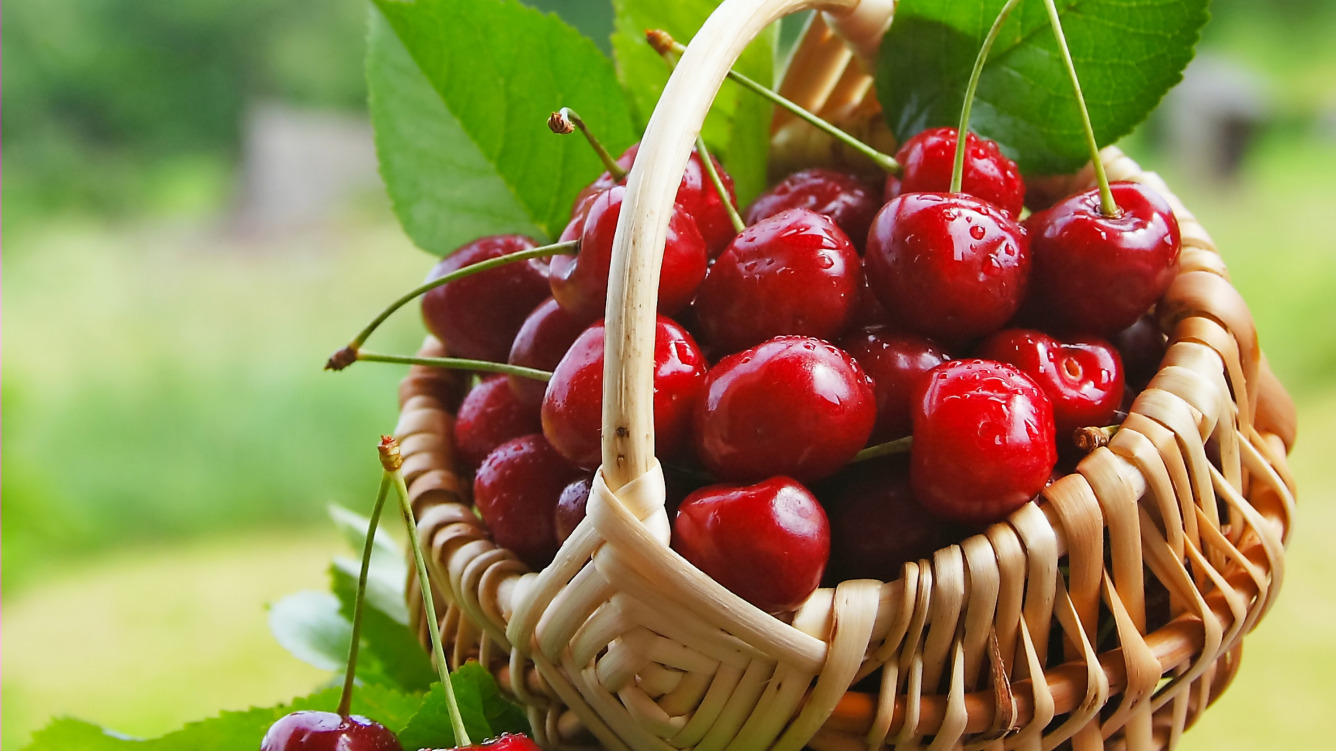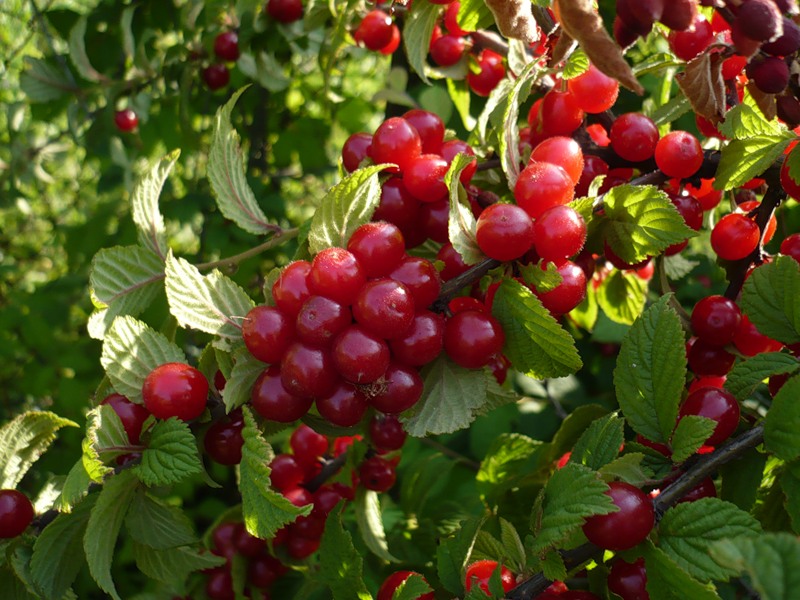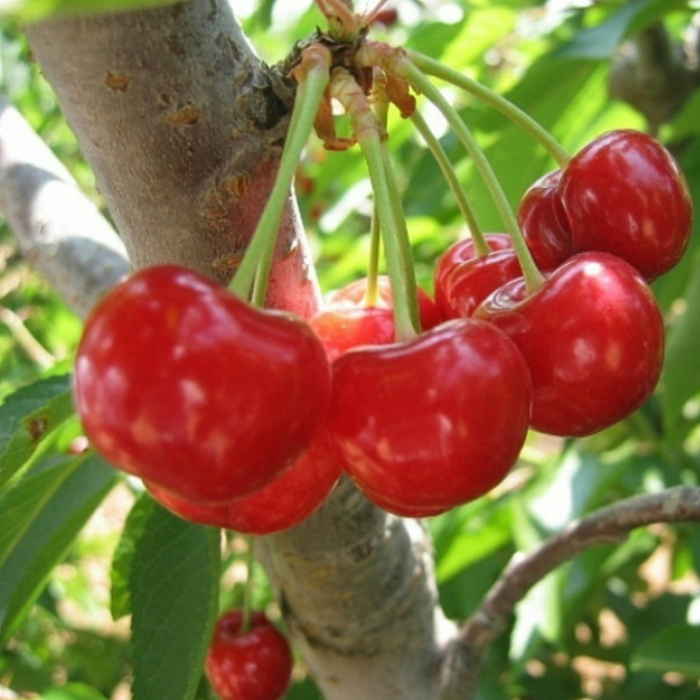Content:
Not all gardeners are fortunate enough to have a large garden. Nevertheless, I want to plant everything and more, including fruit and berry trees and shrubs. In such cases, undersized varietal trees and shrubs help out. Low-growing cherry varieties, despite their compactness, are almost not inferior in yield to their tall competitors.
Description of culture
The dwarf cherry is a squat, branchy, beautiful shrub that grows very quickly. Its height is 150-170 cm, but sometimes it grows up to two and a half meters. Branches are brown with a reddish tint.
Low-growing cherry is winter hardiness and high yield. Fruiting occurs much earlier in her than in ordinary ones. Although it is small, this does not affect the yield in any way - 10-15 kg of berries from one tree per summer, sometimes up to 20. Fruits are small, sometimes of a fancy shape, located on a branch very close to each other. When the bush is blooming, even the leaves are not visible - one white cloud of flowers with a very pleasant aroma.
The color of the berries ranges from red to almost black, they taste sour-sweet, sometimes tart. The leaves have a pointed shape with a jagged edge, the surface is slightly rough. Below the leaf has a grayish tint. And on top it can be green, orange or red, depending on the season.
Such a cherry is very tasty in compotes, jam, jelly, pies, as well as fresh.
Advantages and disadvantages
- The tree is not afraid of drafts and winds. It has very strong branches and a dense crown;
- The root system is located in the upper layers of the soil, so it will not reach the groundwater.
- A small tree develops faster and therefore begins to bear fruit faster.
- Harvest not less than from ordinary cherries;
- It has a low height, so it is easier to harvest, no ladder or step-ladder is needed;
- Not very demanding on the type of soil;
- Does not require additional shelter for the winter, since the tree is very cold-resistant;
- The fruits tolerate transportation well.
With all the advantages of this type of cherry, there are also disadvantages. True, there are not so many of them. The berries are still smaller in size than those of their tall counterparts. And they taste sour.
Types of cherries
There are many popular varieties of undersized cherries.
Anthracite
Grows as shrubs. The height is about two meters. Needs pruning, it is necessary to shape the crown. Anthracite is not very frost-resistant, therefore it is preferable to plant it near buildings. The berries are small, almost black in color - hence the name. The stone is easily separated, which is why Anthracite is often compared to sweet cherry. It begins to bloom in mid-May, at the end of July the fruits are already ripening.
Bystrinka
Bystrinka is a low-growing cherry, besides it is very fruitful, up to 20 kg from a tree can be harvested per season. Has a spherical crown of moderate density. It blooms in mid-May and ripens in early July. The tree begins to bear fruit at the age of four. Bystrinka's fruits are oval, dark red in color. The disadvantage is susceptibility to fungal diseases. Bystrinka is a good variety for central Russia.
Youth
Like all small cherries, Molodezhnaya has a short stature and a moderately rounded crown.The berries are relatively large, weighing about 5 g, oval, maroon color. Productivity 10 - 12 kg per tree.
Gnome
Cherry Gnome is a late-ripening self-fertile variety. It has round-shaped fruits weighing up to 4 g of bright red color. The stone is small (8% by weight of the berry) and brown. This species is characterized by increased cold resistance and resistance to pests, but low resistance to fungus. Another minus of the Gnome is the uneven ripening of the fruits.
Winter pomegranate
Dwarf Cherry Winter Pomegranate is a hybrid of Canadian and sand cherries. It was bred specifically for areas with cold winters. The seedling begins to bear fruit already in the second or third year, however, the yields are small: up to 2-4 kg. In the fifth year, the yield will increase to 6 kg, and in the sixth - the eighth already from 10 kg per tree. Cherry Winter Pomegranate has good immunity to pest attacks. Very winter-hardy. It perfectly tolerates low temperatures, up to forty degrees.
The berries weigh 3-4 g, the color is ruby at first, but as they ripen, it becomes rich burgundy. The berries have a very small pit. Ideal for cooking compotes, preserves, jams. And also for making homemade wines, liqueurs, liqueurs.
Chocolate girl
This variety appeared by crossing Lyubskaya with Black Consumer Goods. The result is a dark-burgundy, almost chocolate-colored berry. The crown of this tree is not very dense, has a back pyramidal shape. Chocolate bark with erect shoots. The leaves are oval, have a bright green color without shine. It blooms in early May.
Miracle cherry
Miracle Cherry belongs to the early ripening varieties. By the end of June, berries ripen on this small tree, which needs constant pruning. Miracle Cherry differs from the rest of its small relatives in the size of the berry, which reaches 9-10 g, and in the high sugar content in the fruits, the sourness is almost invisible. This baby is self-fertile, so she needs pollinators. Yields a harvest from the third year of life. Very resistant to cold weather and many diseases.
Agrotechnics
You do not need to have special skills to grow such a crop, but it is important to choose the right varieties. For the southern regions, individuals with little frost resistance are suitable, for the northern regions - more cold-resistant. Cherry loves sunlight very much, when choosing a site for it, you should not forget about it.
It is also advisable to protect the cherry tree from the wind. A cold winter wind can freeze the bush, and a spring wind can disturb the stamens of flowers, as a result of which the yield will decrease.
Cherry loves soil rather loose, with increased air circulation. Therefore, it must be planted in sandy loam soil.
After planting the plant around it, you need to make a groove about 10-15 cm deep and water thoroughly. Water needs to be poured out about two buckets.
For preventive purposes, the roots can be immersed in water for five to six hours.
In the fall, it is advisable to fertilize cherries with manure and potassium-phosphorus fertilizers. In the spring, it is useful to apply urea and thoroughly dig up the soil.
Fertilize three to four times a year.
In the spring, the trunk of a tree (and not only cherries, but also all fruit trees) must be whitewashed with a solution of lime. Dry twigs must be removed in the spring. So the plant will receive more nutrients, and there will be fewer harmful insects.
If the cherry is not affected by any pests (aphids, weevils, etc.), the leaves can be used for humus. In other cases, it is necessary to dispose of them (burn, take out).
Low-growing varieties of cherries are propagated by stock. Overgrowth planting will not bring the desired results.
With proper care of dwarf cherry varieties, they give an excellent harvest.



